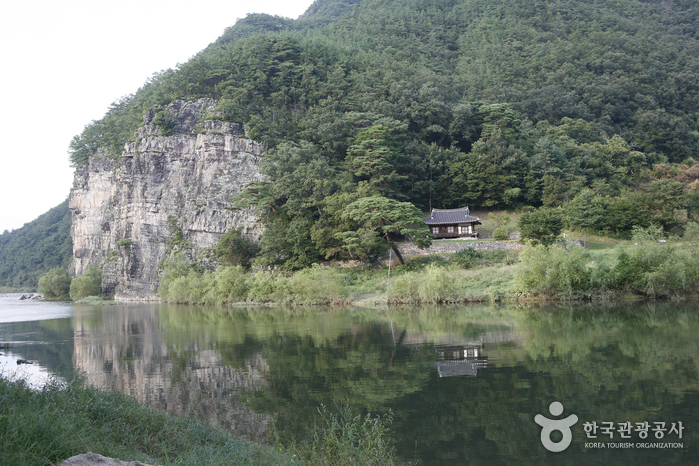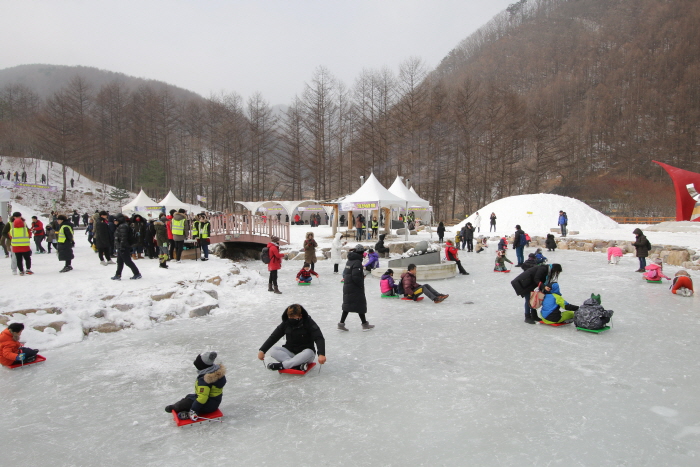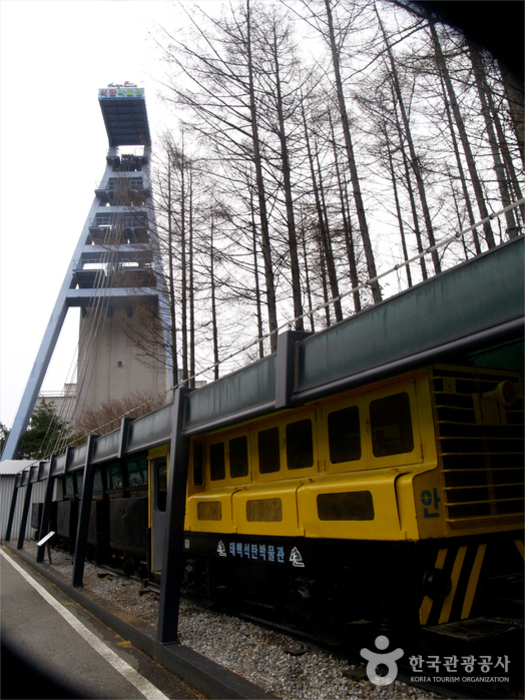Manhoegotaek [Korea Quality] / 만회고택 [한국관광 품질인증]
18.3 Km 3568 2023-11-30
51 , Baraemi 1-gil, Bonghwa-gun, Gyeongsangbuk-do
+82-54-673-7939, +82-10-8079-7939
The prestigious Manhoe Old House in Baraemi Village, Bonghwa, Gyeongsangbuk-do, is a nationally designated folk cultural asset, because of its 300 year history and its association with both Korean literature and the March 1st independence movement. It is said that a thousand poems were written in Myeongwolru, the Old House’s pavilion; and the 1919 Independence Petition was also written here. There are 7 guestrooms, one with an attic with exposed roofbeams, and most but not all rooms have individual toilets. Guests can take part in traditional activites such as folk games.
Tohyang traditional house [Korea Quality] / 토향고택 [한국관광 품질인증]
18.3 Km 10790 2020-09-10
43, Baraemi 1-gil Bonghwa-eup, Bonghwa-gun, Gyeongsangbuk-do
+82-10-8575-9036
This historic house has been the home of the descendants of Kim Yeo-byeong, one of the tenth-generation ancestors of its current occupants. Kim Yeo-byeong was born as the fourth son of Kim Seong-gu (courtesy name: Oheon, 1641-1707), founder of Uiseong Kim's Clan at Baraemi Village in Bonghwa and who was a great-great-great grandson of eminent Neo-Confucian official-scholar Kim U-goeng (courtesy name: Gaeam, 1524-1590). The house is comparatively large, featuring a square layout with a lofty five-bay gate building (soseuldaemun) and the main house of seven bays. The main building (anchae) of the house, located against the backdrop of a pine hill, is believed to have been built over 400 years ago before the founder of the family arrived at the village. The family guesthouse (sarangchae) was renovated in 1876 by Kim In-sik (courtesy name: Amun, 1855-1910), who served as the caretaker (Chambong) of Sunghyejeon Shrine, and Grand Master Tonghun before founding Joyang School, which would later become the present-day Bonghwa Elementary School. The name of the house, Tohyang, came from the courtesy name of Kim Jung-uk (1924-1967), a grandson of Kim In-sik. The latter was conscripted by the colonial authority ruling Korea at the time to serve the Japanese puppet state Manchukuo but fled during a military drill to become a freedom activist fighting against Imperial Japan in the Chinese cities of Suzhou and Hangzhou. He returned home after the 1945 Korean Liberation and studied in Jungang High School and Korea University before serving as a budget officer at the Economic Planning Board. The name of the house inscribed on the plaque hung under the roof of the gatehouse was written by his son Kim Jong-gu in honor of his life and achievements. At the front courtyard of the house is a lotus pond including barbecuing equipment and pottery kiln. In the rear garden is a folk playground with facilities and equipment for swinging, traditional Korean seesaw, shuttlecock-kicking, pitch-pot, and top spinning. The front courtyard also features rustic ceramic pots and rooftiles bearing poetic passages written by the mistress of the house who is a prize-winning poetess. The house provides visitors with an opportunity to experience traditional Korean cultural heritage such as pottery, calligraphy, poetry, and traditional musical instruments. Rich with the heritage of traditional Korean culture and lifestyle, the Historic House of Tohyang guides visitors to refreshment and healing obtained from the legacy of the peaceful rural life of days gone by.
The Namho house [Korea Quality] / 남호구택 [한국관광 품질인증]
18.6 Km 117 2020-09-03
21, Baraemi-gil, Bonghwa-gun, Gyeongsangbuk-do
+82-54-673-2257
Located in Bonghwa-eup, Bonghwa-gun, Gyeongsangbuk-do, Bonghwa Namho Gutaek is an old house from the Chosun period designated as Cultural Property Material No. 385. It was built by Nongsan Kim Nam Yeong in 1876 and his son Namho Kim Roe Sik had lived there. Mr. Kim Roe Sik was awarded with a medal for contributing his entire asset to military fund for the Provisional Government of Korea. The spirit of putting others and his country before himself continues until now. Having been built with high-quality materials, the 140-year old Namho Gutaek has barely suffered any deformation. In addition, attentive care added by the descendants has kept the traditional beauty of the hanok intact. One may even feel reverence at the Sosel Daemun (gate). In harmony with the hanok, the garden in the yard and the flower bed sitting next to the wall change color as season changes. It is a great place to feel the scent of old trees and get some rest. In 2016, the shared toilet was renovated in modern style to alleviate any inconvenience for the guests. In the spacious yard, there’s a spot for traditional games such as Tuho, Jegichagi, Neoltuigi, etc. Bonghwa Station (Yeongdong Line) is about a 15- minute walk away; an inner city bus stop in the town, on the other hand, makes a trip to other regions easy.
Sogang House [Korea Quality] / 소강고택 [한국관광 품질인증]
18.6 Km 5128 2022-03-31
22, Baraemi-gil, Bonghwa-eup, Bonghwa-gun, Gyeongsangbuk-do
+82-10-9189-5578
Located in Baraemi Village, Bonghwa, Gyeongsangbuk-do, Sogang House is a hanok that is over 100 years old. Baraemi Village, the Uiseong Kim clan village, has lots of old houses remaining, but Sogang House has an outstanding history and ambiance. The house was built around 1910 by Namho Kim Roi-sik, a renowned wealthy patriot in Gyeongsang-do, for his second son, Sogang Kim Chang-gi when he was married. Kim Roi-sik is a figure who donated the money secured on his whole possession when the Provisional Government of Korea in Shanghai was raising contributions, and received the Order of Merit for National Foundation. Sogang House is a D-shaped hanok with the adjoining sarangchae and anchae. Even the door frame of the house is built with the chunyang pine, showing the elaboration put in its building. As it is not easily twisted or rotten, chunyang pine is the best pine for architecture that was used for building the palace, the temple, and houses of aristocrats in the Joseon period. There are six guest rooms, including Sarangbang and Eosabang. Sarangbang contains two rooms and veranda, Seonbibang is the room that sunshine comes in the earliest in the morning, and Doryeongbang is the only ondol (floor-heated) room that is built with red clay. Every room has an air-conditioner and the lovely garden with a flower tree is seen through the open window.
Gosanjeong Pavilion (고산정)
19.3 Km 21310 2024-05-30
177-42 Gasong-gil, Dosan-myeon, Andong-si, Gyeongsangbuk-do
Gosanjeong Pavilion was built by Geum Nan-su in 1564 as a place for study. The pavilion is located below the Gasonghyeop escarpment, one of the eight scenic sites of Andong, along the Nakdonggang River. Views from the pavilion include Woebyeongsan and Naebyeongsan Mountains and a lush pine forest.
Nongam Head House (농암종택)
19.7 Km 51330 2023-05-18
162-133 , Gasong-gil, Andong-si, Gyeongsangbuk-do
+82-54-843-1202
This is the head house of Nongam I Hyeon-bo, located in Gasong-gil, Dosan-myeon, Andong-si. I Hyeon-bo served as Saganwonjeongeon in 1504 (the 10th year of Yeonsangun) and was exiled to Andong due to the king's anger. The place where Nongam Head House was located was Buncheon Village, but Buncheon Village was submerged due to the construction of Andong Dam in 1976. Since then, the head house, shrine, and Geunggudang, which had all been relocated to various places in Andong, were moved to one place by I Seong-won, a descendant of the Yeongcheon I family. In 2007, Bungang Confucian Academy was rebuilt and is now called Bungang Village and open to the public.
Taebaeksan Mountain Snow Festival (태백산 눈축제)
19.9 Km 83996 2024-01-03
168 Cheonjedan-gil, Taebaek-si, Gangwon-do
+82-33-553-6900
Taebaeksan Mountain Snow Festival is a festive winter event that takes place admist the grandeur of the Taebaeksan Mountain. Various programs like snow carving contest, snow sculpture exhibition, ice sledding, igloo café and more are planned for entertainment and fun.
Taebaek Coal Museum (태백석탄박물관)
19.9 Km 7029 2019-02-09
195, Cheonjedan-gil, Taebaek-si, Gangwon-do
+82-33-552-7730
Taebaek Coal Museum is located where coal was first discovered within Korea. While coal has declined in use, the resource served an important role in the modernization of the nation. The museum is a place where you can learn about the history of Korea’s coal industry through well-organized exhibitions.
![Manhoegotaek [Korea Quality] / 만회고택 [한국관광 품질인증]](http://tong.visitkorea.or.kr/cms/resource/38/3042238_image2_1.jpg)
![Tohyang traditional house [Korea Quality] / 토향고택 [한국관광 품질인증]](http://tong.visitkorea.or.kr/cms/resource/57/2627457_image2_1.jpg)
![The Namho house [Korea Quality] / 남호구택 [한국관광 품질인증]](http://tong.visitkorea.or.kr/cms/resource/90/2626090_image2_1.jpg)
![Sogang House [Korea Quality] / 소강고택 [한국관광 품질인증]](http://tong.visitkorea.or.kr/cms/resource/80/2803880_image2_1.jpeg)




 English
English
 한국어
한국어 日本語
日本語 中文(简体)
中文(简体) Deutsch
Deutsch Français
Français Español
Español Русский
Русский